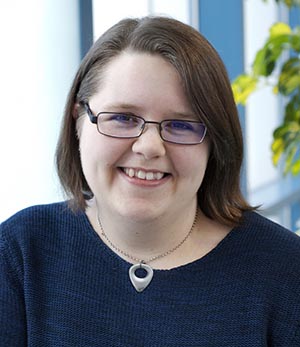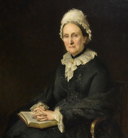
-
Celebrations begin to commemorate 50 years of the University of Dundee
2017 -
The University of Dundee becomes a fully independent institution under the terms of the Royal Charter.
1967 -
Ordinances issued in 1897 made University College form part of St Andrews. and establish a Faculty of Medicine.
1897 -
The Deed formally creating University College Dundee was signed by founders Miss Mary Ann Baxter and her cousin Dr John Boyd Baxter.
1881
Philanthropy
-
date
Fri, 22 Dec 2017
-
Running Time
00:05:38
Today’s Dundonians have grown up playing in parks, being educated in classrooms, and being entertained in concert halls that bear some distinguished names.
Episode Transcript
Today's Dundonians have grown up playing in parks, being educated in classrooms, and being entertained in concert halls that bear some distinguished names.
They have grown up being familiar with Baxter and Caird – names entrenched in the culture and social fabric of the city.
The legacy of philanthropy in Dundee is remarkable, with wealthy industrialists using some of the wealth that the city had created for them to enhance the lives of the people.
The University of Dundee itself was founded as a result of philanthropy.
In 1881, a Deed of endowment for £120,000 by Mary Ann Baxter, daughter of William Baxter, the founder of the Baxter Brothers textile business funded the forerunner to our present institution, University College, Dundee. There was a smaller donation of £5000 by a relative, Dr John Boyd Baxter.
In the Deed it is stated that the college should promote "the education of persons of both sexes and the study of Science, Literature and the Fine Arts." The insistence on the education of women came from Mary Ann Baxter herself, who was 80 years old at the time and due to her failing health was unable to attend the opening ceremony.
She was also co-founder of the Technical Institute of Dundee with her brother, Sir David Baxter which opened in 1888 – this led to the establishment of Duncan of Jordanstone College of Art and Design.
All of the Baxter children - Edward, David, John, William, and Eleanor - made donations to causes throughout their lives. Mary Ann outlived them all.
In 1861, Mary Ann, Eleanor and David founded Baxter Park, a park that covered 36 acres. The commissioned Sir Joseph Paxton, the most highly regarded park designer of the Victorian age and charged him with creating a place where "the labouring population of Dundee might breathe freely". The Baxter family was also instrumental in funding the Albert Institute of Literature, Science, and Art (now The McManus).
Sir David Baxter also built a convalescent home at Broughty Ferry at a cost of £30,000 for Dundee Royal Infirmary. In his will left £20,000 towards the foundation of a mechanics' institute in Dundee – now the University of Abertay.
There can be few Dundonians who haven’t seen the impressive foyer and grand auditorium of the Caird Hall, which dominates the City Square.
Sir James Key Caird, 1st Baronet was one of the city’s most successful entrepreneurs, bringing the latest technology into his Ashton and Craigie jute mills.
His donation of the Caird Hall, which opened in 1923, brought some of the world’s biggest names to the city including Frank Sinatra, The Beatles, Bob Hope, Queen and Elton John. It has also been the grand surroundings for University of Dundee graduations. Also in the Caird Hall complex is the Marryat Hall, given by his sister Mrs Emma Grace Marryat.
To the north of the city is the open air space he donated to the people. At Caird Park, there is Mains Castle, the Den o’ Mains with its woodland walks and Gelly Burn, as well as golf courses, a velodrome, athletic track, and sports pitches. Certainly a place for people to enjoy the fresh air.
With good health Caird also gave £18,500 to Dundee Royal Infirmary so they could plan and build a cancer hospital, which admitted its first patients in 1907. He subsequently funded research for five years "into the nature of this mysterious disease."
With an adventurous spirit and enquiring mind, he was also keen to be a sponsor of Sir Ernest Shackleton's Antarctic expedition of 1914 to 1916. It must have been a hefty donation, as the largest of the ship's boats was named the James Caird.
In this boat, six of the crew made a voyage of 800 nautical miles from Elephant Island to South Georgia. Unfortunately, Caird died two months before Shackleton arrived safely at Stromness, South Georgia.
Morag Hannah

Morag Hannah works on the University Web Team. Originally from Ayrshire, she grew up on the Isle of Arran, and studied English Language and Linguistics at the University of Edinburgh. Past jobs include shop assistant, typist, reviewer, designer, singer, armourer and ghost tour guide, and she's worked with the University of Dundee for five years.
Her hobbies include singing (she has sung with several university choirs), playing guitar and piano, digital and fine art, and most recently pottery, and she is a (pseudonymously) published writer.
-
Celebrations begin to commemorate 50 years of the University of Dundee
2017 -
The University of Dundee becomes a fully independent institution under the terms of the Royal Charter.
 1967
1967 -
Ordinances issued in 1897 made University College form part of St Andrews. and establish a Faculty of Medicine.
1897 -
The Deed formally creating University College Dundee was signed by founders Miss Mary Ann Baxter and her cousin Dr John Boyd Baxter.
 1881
1881